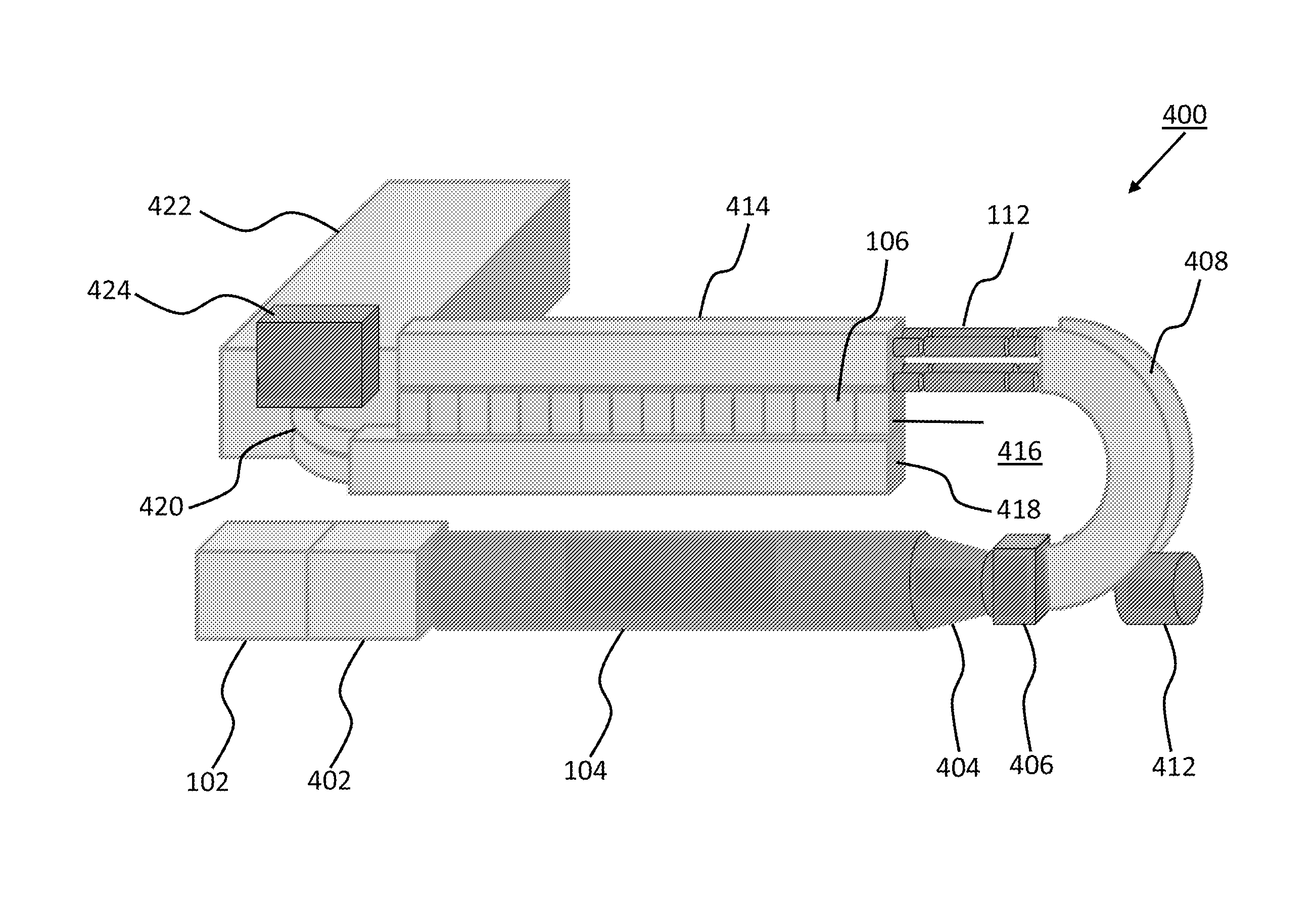Ion Separation and Storage System
a technology of ion separation and storage system, applied in the field of mass spectrometry, can solve the problems of not being able to allocate even a single scan of the mass analyzer, and not being able to perform analysis at this level
- Summary
- Abstract
- Description
- Claims
- Application Information
AI Technical Summary
Benefits of technology
Problems solved by technology
Method used
Image
Examples
Embodiment Construction
[0012]In accordance with an aspect of at least one embodiment of the invention, there is provided an ion storage mass spectrometer, comprising: an ion source for providing ions; at least one ion separator positioned to receive ions that are produced in the ion source and being configured to separate said ions into a plurality of different ion groups according to at least one ion property; an ion storage array comprising a plurality of independently operable storage cells, each storage cell being arranged to receive a different ion group of the plurality of different ion groups from the at least one ion separator; a voltage source coupled to the ion storage array for establishing different electric field conditions within each different storage cell of the ion storage array, each of the different electric field conditions supporting the storage of only one ion group of the plurality of different ion groups; a controller programmed to cause the voltage source to selectably switch each...
PUM
 Login to View More
Login to View More Abstract
Description
Claims
Application Information
 Login to View More
Login to View More - R&D
- Intellectual Property
- Life Sciences
- Materials
- Tech Scout
- Unparalleled Data Quality
- Higher Quality Content
- 60% Fewer Hallucinations
Browse by: Latest US Patents, China's latest patents, Technical Efficacy Thesaurus, Application Domain, Technology Topic, Popular Technical Reports.
© 2025 PatSnap. All rights reserved.Legal|Privacy policy|Modern Slavery Act Transparency Statement|Sitemap|About US| Contact US: help@patsnap.com



